Niki Lauda, Three-Time F1 World Driving Champion, Dies at Age 70
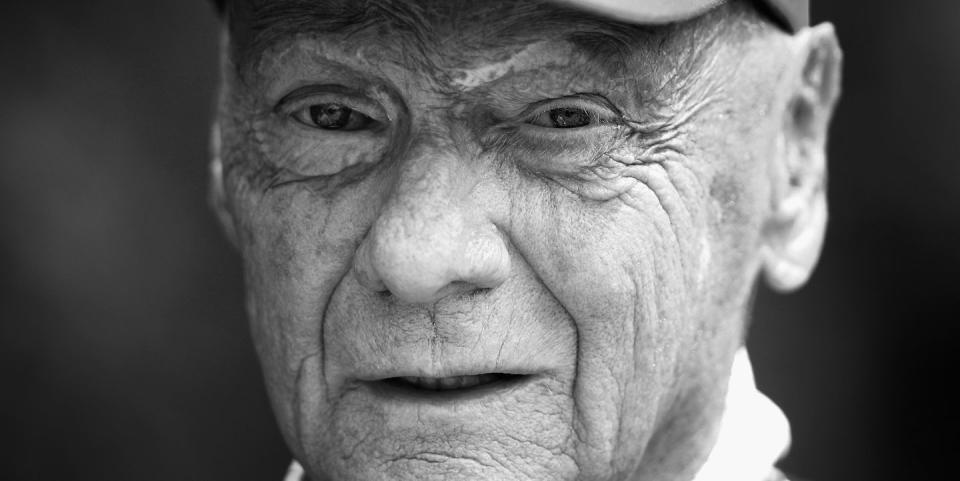
"My life is worth more than a title," Niki Lauda is reported to have said after he parked his Ferrari 312T2 two laps into the rain-battered 1976 Grand Prix of Japan. Lauda was in a brawl with James Hunt for that year's championship. He quit that last, decisive race, but his courage and determination were never in question. This was, after all, the man carrying the number 1 on his Ferrari and a man who earlier that season had been nearly incinerated during the German Grand Prix at the Nürburgring (the last one to run on the original course), only to will himself back into a race car six weeks later. And with that withdrawal in Japan, he cemented his reputation as one of the most fiercely intelligent and independent men to ever drive a Formula 1 car.
Niki Lauda won three Formula 1 world championships, and yet he may well be remembered most for the one from which he retired. His family announced the night of May 20 that Lauda had died after battling with the lingering effects of that 1976 Nürburgring crash for the rest of his life. He was 70 years old.
"I am emotional," Lauda told Britain's Top Gear magazine in 2013 when queried about his legendarily stoic personality. "But I also have everything well under control and I can analyze things properly. What drives me crazy is the amount of talking that goes on. I like to make my life simple. I get straight to the point. If it's my mistake, it's my mistake. In motor racing, you learn to achieve the best result in the shortest amount of time. It applies in life too. Be quicker than the others. And don't make mistakes. Even if things fail, have the discipline to find a new way, rather than embarking on a pointless emotional journey."
Andreas Nikolaus Lauda was born on February 22, 1949, in Vienna into a prominent and prosperous Austrian family. Less than two weeks after Niki's birth, his grandfather Hans Lauda, then president of the Austrian Industrialists Association, was cited by the New York Times in a report about progress of the Marshall Plan in rebuilding the country after World War II. According to the elder Lauda, Austrian industries were prepared to employ 20,000 former government officials during 1949. That's important if you were a former government official. And the Laudas were the sort of family that expects its younger members to follow its well-trodden path into finance and industry. A Lauda wasn't supposed to become a racer.
Still, it was the wealth of the Lauda clan that allowed young Niki to enter the world of racing, at least obliquely.
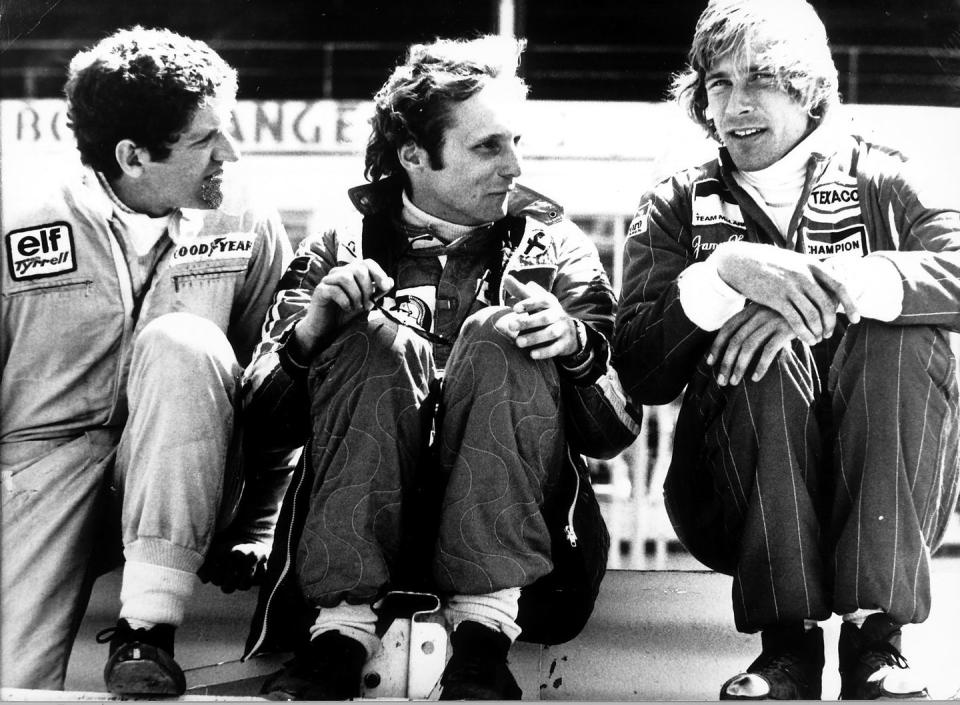
Lauda got a tantalizing taste of success the first time he raced, driving a Mini Cooper to a second-place finish in a 1968 hill-climb. He skipped college to chase his racing dream. But his family wasn't about to write checks to further his pursuit. So he took out loans to finance his apprenticeship through the Formula Vee and Formula 3 ranks. Then in 1971 he took out an even bigger loan against his life insurance policy to join the March team in Formula 2. With the 1972 season approaching, Lauda applied for another loan to move up to Formula 1 with March. He was even approved for that increased debt.
"One of the bank directors gave me the all-clear to do an F1 deal," Lauda recalled to Britain's Motor Sport magazine in 2009, "so I signed a contract with Max and Robin. Then I came back to Vienna and the same director told me 'a sum of money like this needs me to get the approval of the supervisory board.' He came back after he'd done that and said, ‘They say no.' "
"They," it turns out, was really one person. His grandfather.
"I telephoned my grandfather and asked him if he could please f*** off interfering in my business," Lauda recalled in that same interview. "But he said he would not and that no Lauda would ever be a racing car driver. I never spoke another word to him for the remainder of his life. Now I was in a tricky situation. I had signed a contract and couldn't pay what I had agreed, which was not the way I had been brought up. The way I saw it, I couldn't let March down."
Lauda approached another bank in Vienna and was on the verge of securing a new loan that substituted sponsorship on his car and helmet for interest. "Then the manager asked what would happen if I killed myself," said Lauda. "I thought 'shit, I hadn't thought of that.' We clinched the deal by securing the money against an insurance policy on my life. But assuming I survived, there was still the loan to pay back."
Lauda made it to Formula 1 with March in 1972, but the car was uncompetitive. So in 1973, with even more debt in hand, he moved to BRM, where the car was similarly lousy. But at BRM his teammate was Clay Regazzoni. And when Regazzoni-who'd been impressed by both Lauda's driving skill and his ability to practically reengineer a car to extract better performance-was recruited by Ferrari for 1974, he recommended that Lauda come with him.
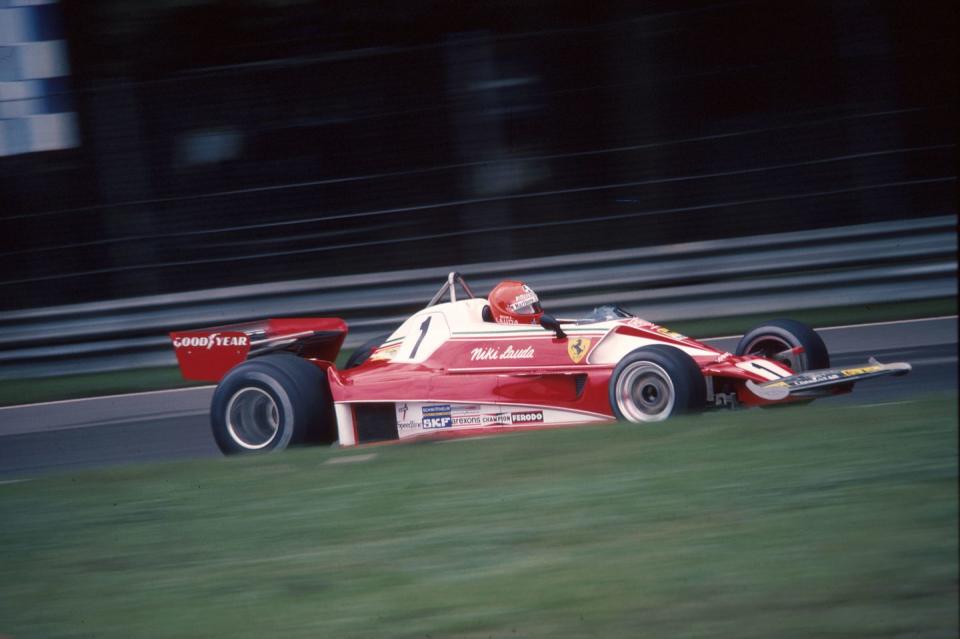
Ferrari would pay Lauda enough to pay off his accumulated debt and his contract with BRM. Somewhat ironically, Hans Lauda passed away in January 1974, just as his grandson was joining Ferrari and about to experience his greatest racing success.
Lauda came to Scuderia Ferrari at the moment when the team was being reorganized under Enzo Ferrari's former assistant, the brilliant 26-year-old Luca di Montezemolo. And it was just as the new, blindingly quick, flat-12–powered 312 was pulling the team out of a decade-long slump.
The combination of Lauda's methodical, precise driving with the performance of the Ferrari 312B3-74 was an instant sensation. Of the 16 Grand Prix races in 1974, Lauda qualified on the pole for eight and won two. His first career victory came in the fourth race, the Spanish Grand Prix at Jarama in April. His second win was two months later in the Dutch Grand Prix at Zandvoort. A frustrating series of early retirements meant Lauda finished fourth in the driver's championship behind Emerson Fittipaldi, his teammate Regazzoni, and Jody Scheckter.
Ferrari started the 1975 Formula 1 season running the 312B3-74 for the first two races but put Mauro Forghieri's brilliant 312T on the track for the third race, the South African Grand Prix at Kyalami. Lauda qualified fourth and finished fifth, a relatively modest start for the new car with its innovative transverse gearbox.
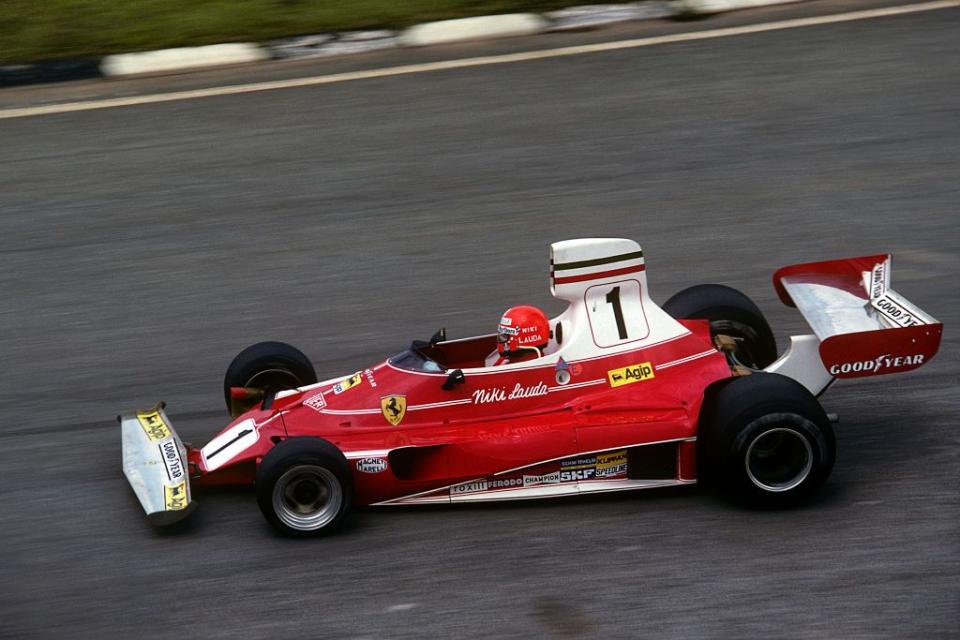
"I didn't fully appreciate the advantages it would offer because it seemed such a big change from a chassis about which we knew everything," Lauda told Motor Sport in 2005. "But the 312T really did possess totally neutral handling and a wide torque curve. It was a true gem, a lasting monument to Forghieri's abilities."
At the Monaco Grand Prix, Lauda and the 312T ran away from the field and won easily. He won the next two races as well-Belgium and Sweden. Add victories in the French and United States Grands Prix, and Lauda took the Drivers' World Championship by a wide margin over Fittipaldi. And Ferrari easily secured the manufacturers' crown ahead of the Brabham and McLaren teams.
Lauda's battle with James Hunt during the 1976 season was so dramatic that it literally became a movie-Ron Howard's Rush, released in 2013. With the buttoned-down Lauda in the 312T2 and the flamboyant Hunt most often in McLaren's M23, the racing was going to be epic even without Lauda's fiery disaster at the Nürburgring during the German Grand Prix. But it was that crash that would radically alter Lauda's appearance and define much of the rest of his life and career.
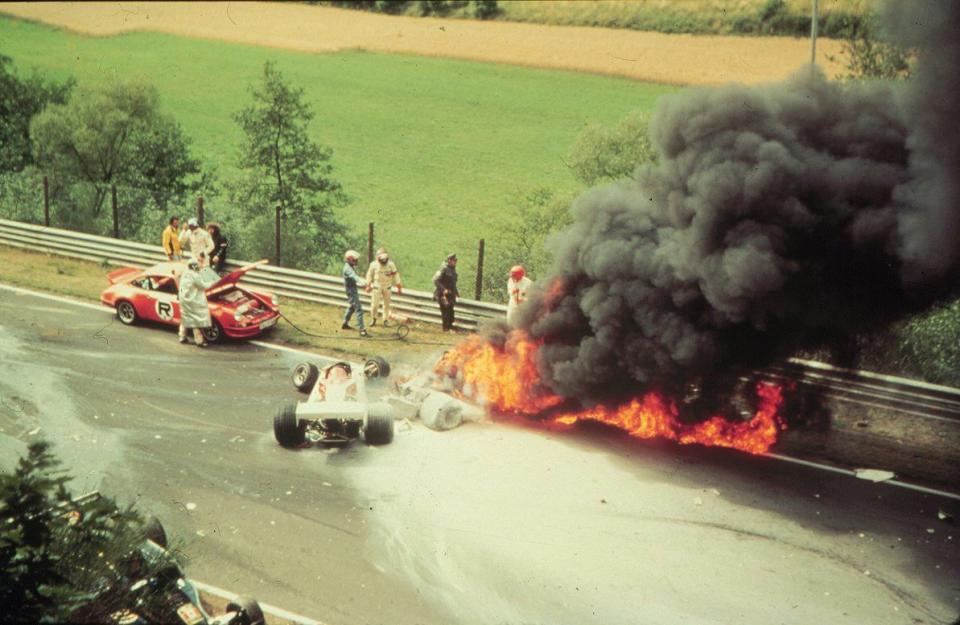
The fire burned off most of his face and ears and horribly scarred his lungs. "My then wife fainted when she first saw me," Lauda recalled to Britain's Telegraph newspaper in 2013. "So I knew it could not have been good."
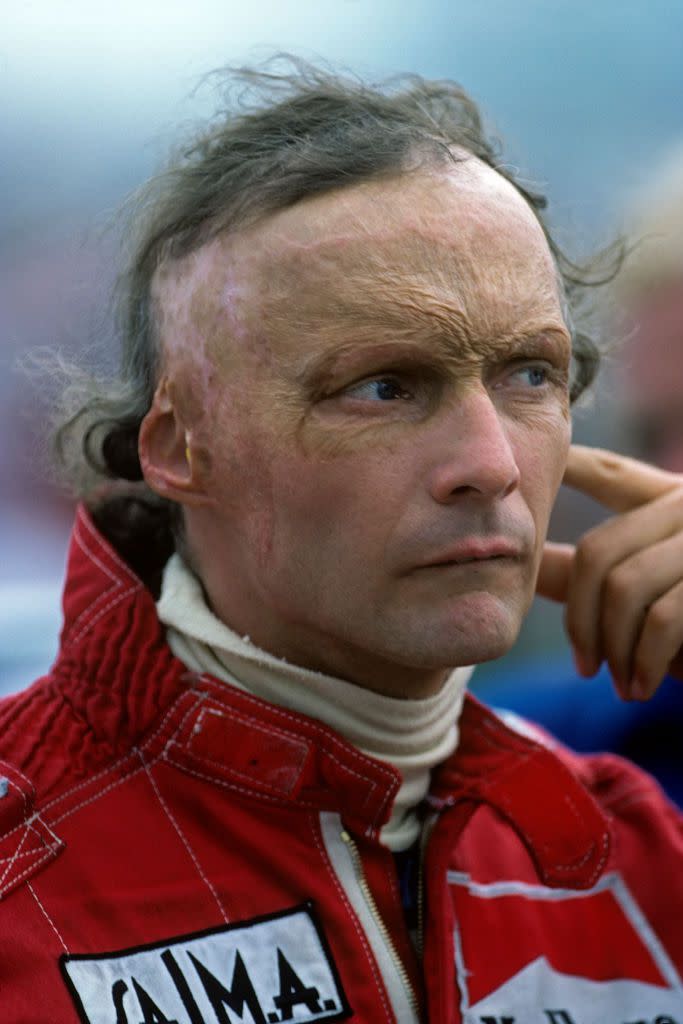
In what amounts to nearly a medical miracle, and an excruciating ordeal, Lauda returned to racing after missing only three races. He had built a formidable lead in the Drivers' Championship after winning five races before that fateful German Grand Prix. Going into the last race in Japan he was still leading Hunt-who also had five victories, after several politically charged rulings-in the championship points race. By parking his Ferrari in Japan, Lauda practically gifted the championship to Hunt, who won it by a single point by finishing third in the decisive race.
Lauda never hid his scars. "I only had to do surgery to improve my eyesight," he explained to the Telegraph. "Cosmetic surgery, it's boring and expensive and the only thing it could do is give me another face. I had the eye surgery so that my eyes could function, and as long as everything functions I don't care about it."
Lauda returned to Ferrari for the 1977 season, but his relationship with Enzo was fraying. Lauda won three races anyhow and took his second driving championship, but Formula 1 was changing. The radical Lotus 78 brought the ground-effects era to the series, and the 312-series Ferrari wasn't likely to be competitive going forward. Lauda took up Bernie Ecclestone's invitation and joined Brabham-Alfa for 1978. He had his moments with Brabham-including a victory in the notorious BT46 with its fan that sucked the car down to the road-but mostly he was frustrated. So Lauda retired after the 1979 season.
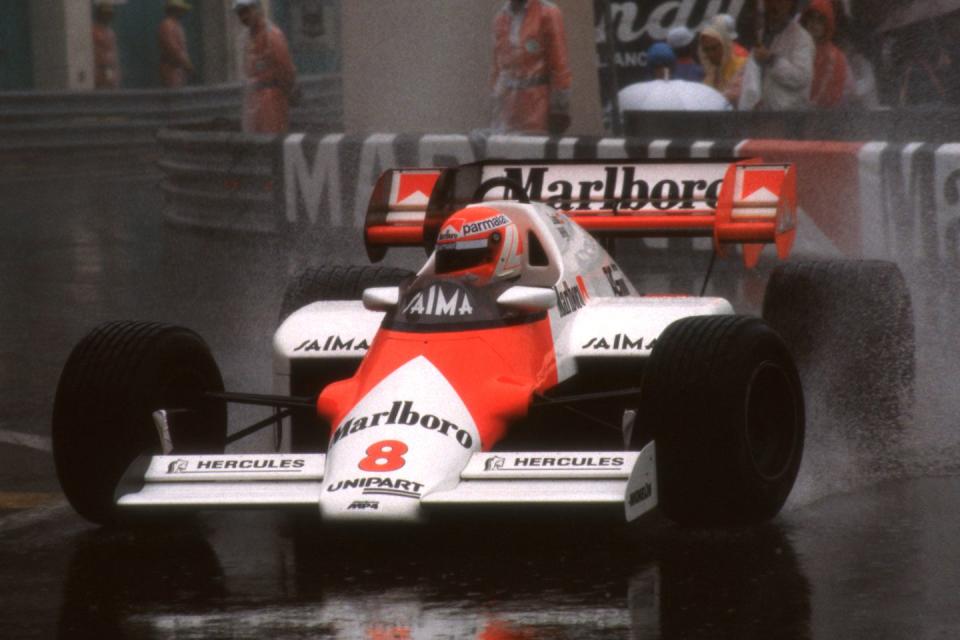
That retirement lasted about three years. He came back during the 1982 season driving for McLaren. And in 1984 he took a third Drivers' World Championship driving the MP4/2C powered by Porsche's awesome radically turbocharged 1.5-liter V-6 engine. He beat teammate Alain Prost by a scant half-point at a time when many already thought of him as washed up.
Lauda ultimately retired after the 1985 season, in which he dropped out of 11 of the 14 races he entered with various mechanical issues. And that retirement allowed Lauda to indulge the mercantile instinct that seems to run through his family. In 1979 he founded Lauda Air, which began operations in 1985 with a fleet that at one time numbered 66 airliners. It was, for a time, the second-largest airline in Austria.
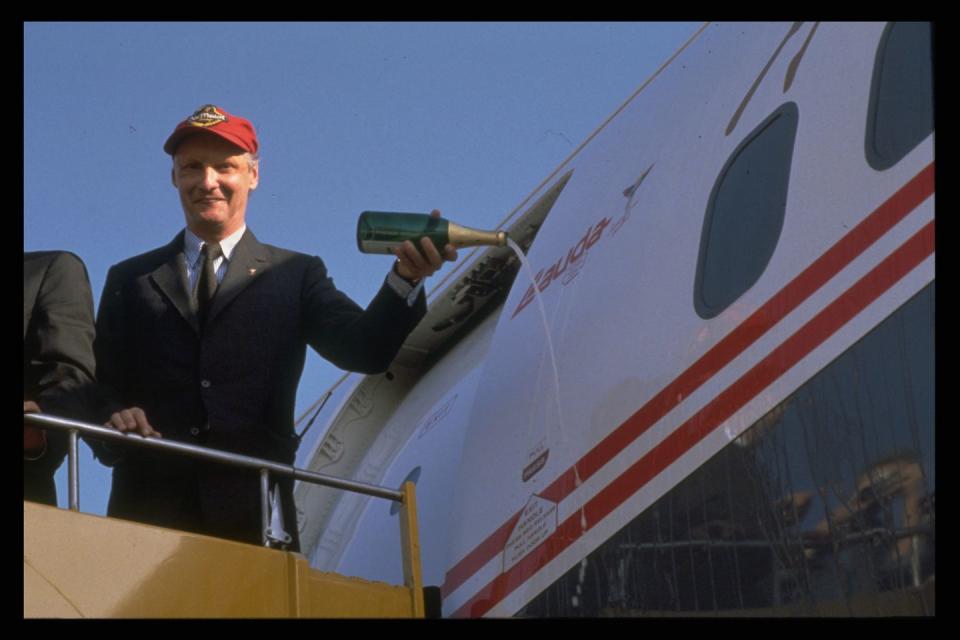
But operating Lauda Air was not without tragedy.
"People always think that the worst time of my life must have been after the German Grand Prix crash in 1976," he told Britain's The Guardian newspaper in 2006. "But it wasn't. In 1991, one of the planes from Lauda Air, the airline I had set up, crashed in Bangkok, killing 223 people. The effect of the disaster was enormous. When I was motor racing, I had taken the decision to risk my life. But when you run an airline and more than 200 people want to go from A to B and they don't arrive-that's a different responsibility. My first reaction was to say that, if my company is responsible for this, then we have to stop running the airline immediately."
Taking personal responsibility to investigate the crash, Lauda traveled to Thailand and then to Boeing in Seattle to test various scenarios in simulators that might explain why the 767-300ER went down. Eventually Lauda and, reluctantly, Boeing, concluded that a thrust reverser had deployed in flight making the plane uncontrollable.
In 2003, Lauda divested himself of Lauda Air and started another airline called Fly Niki, which closed in 2011. In 2015 he started yet another airline, LaudaMotion, specializing in executive jets.
Lauda also worked for Ferrari and served as non-executive chairman of the Mercedes-Benz Formula 1 team since 2012.
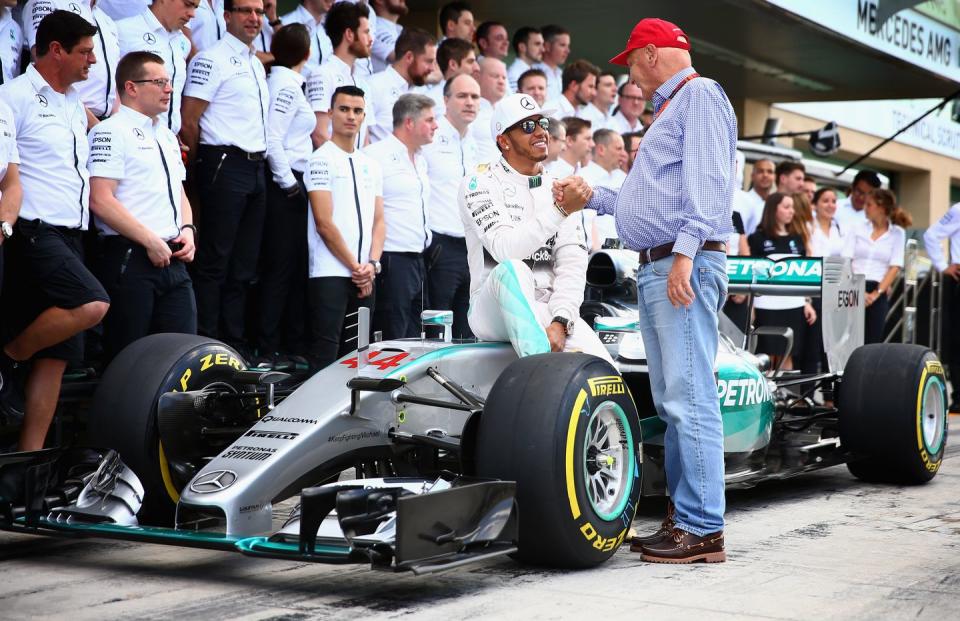
Lauda was married twice. He had two sons, Mathias and Lukas, with his first wife, Marlene, and a son, Christoph, from another relationship. In 2009, when he was 60 years old, his second wife, Birgit, gave birth to twins Max and Mia.
He was, however, plagued by health problems. He needed a kidney transplant in 1997, and the one he received from his brother didn't take. It was Birgit, who was not yet his wife, who donated the second kidney that stuck around. In 2018 his lungs, terribly scarred in that 1976 accident, finally gave out. He received a full lung transplant in August and was discharged from hospital in October. He was hospitalized again in December. The family's report attributed the cause of death to kidney problems.
With his scarred face, it was often said that Lauda resembled a rat, and "the Rat" was often used as his nickname. He was always decisive and insightful, but as stoic and aloof as he could be, he was also somehow vulnerable and fully human.
"Don't talk too much," he told European Business in 2015. "Be focused on the goal and achieve it. Gray zones do not interest me at all. Whenever there is discussion, I make it clear that I do not want any gray zones, just black and white. When you have something in black and white, you can deal with it quicker. You must always be faster and better than the others. The less you talk, the more time you have for the essential things."
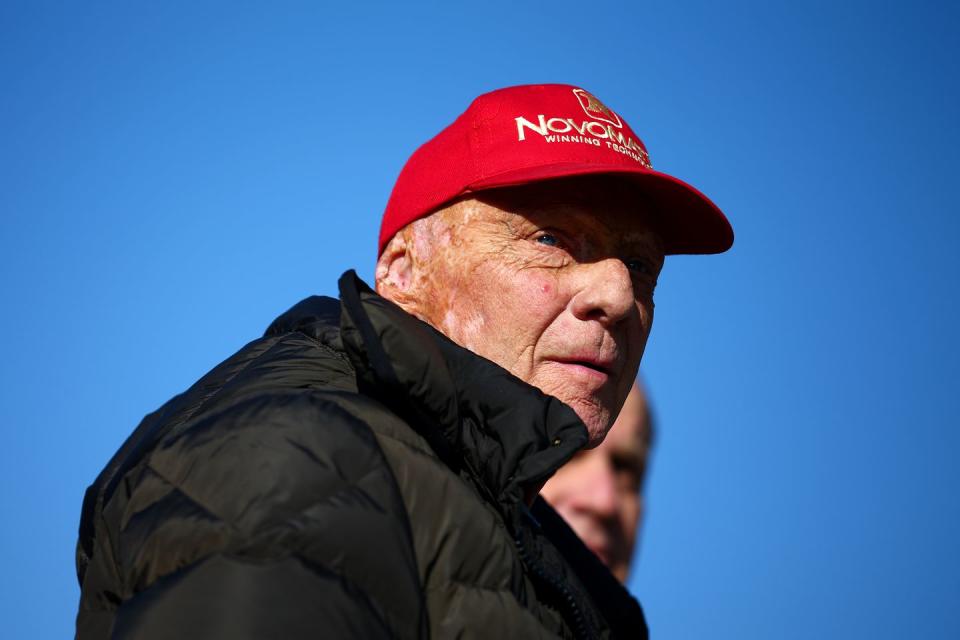
('You Might Also Like',)

 Yahoo Autos
Yahoo Autos 